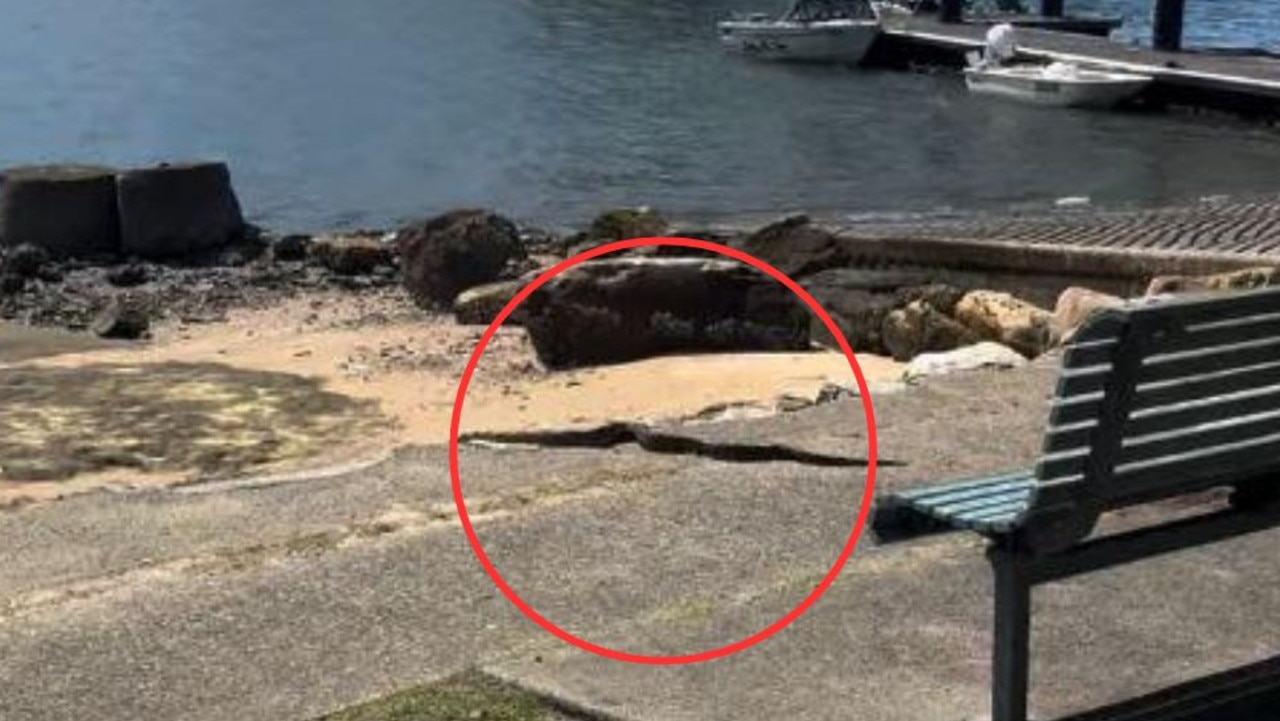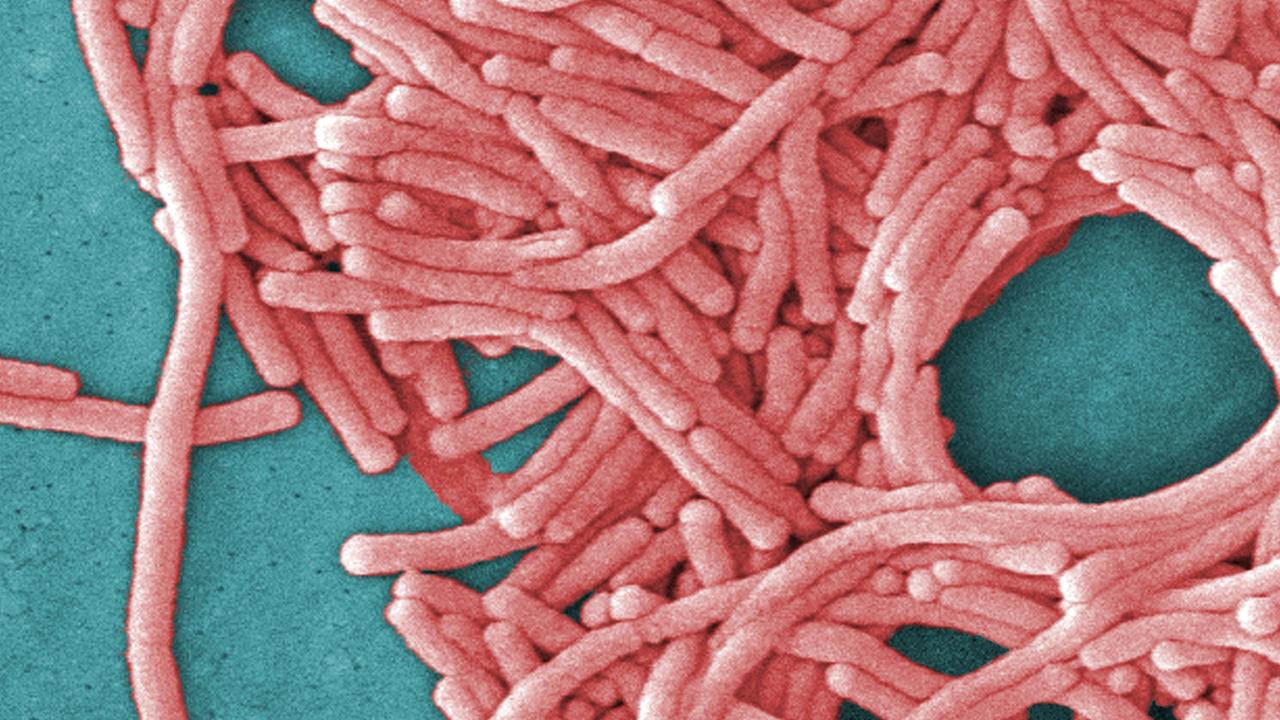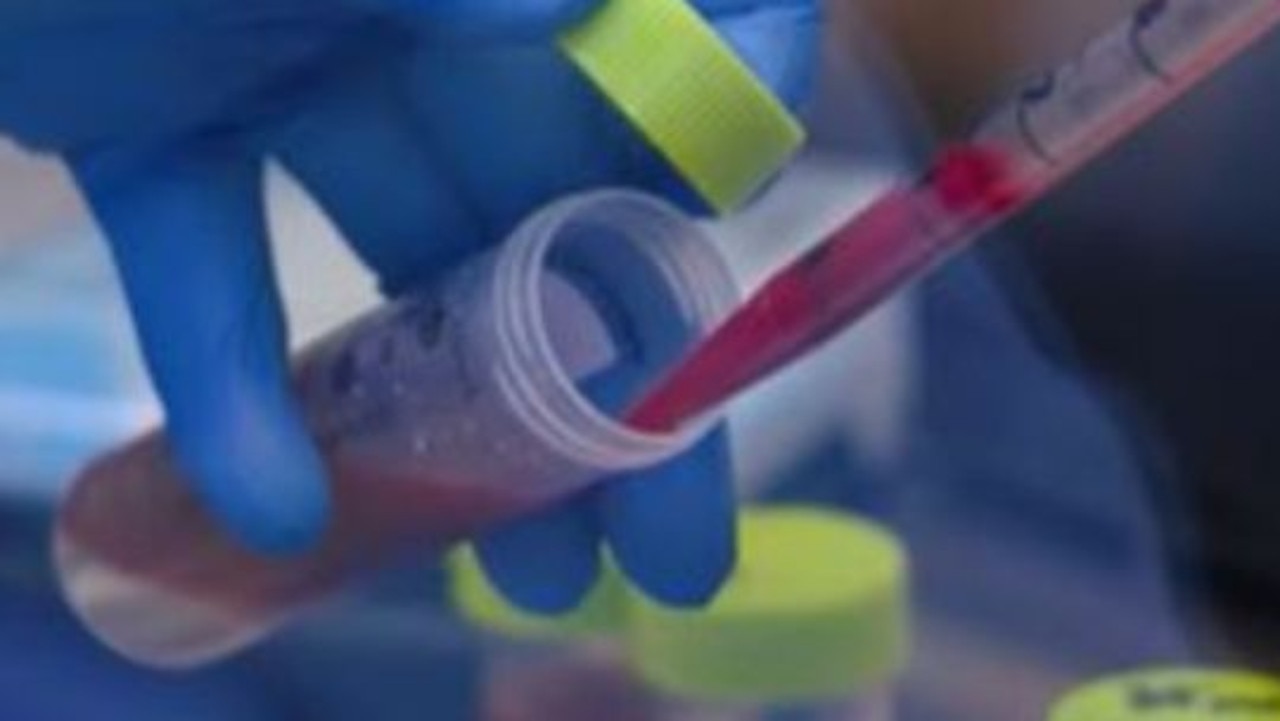12 unidentified creatures that washed up on beaches around the world
MOST of us have come across an unusual object during a beach stroll but these horrors that washed up on coastlines have yet to be explained.
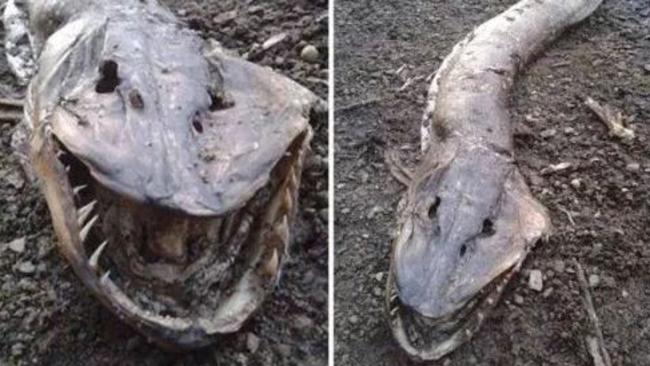
MOST of us have come across a bizarre object during a beach stroll but have usually been able to write it off as a mangled jelly fish or the half-eaten carcass of some unfortunate animal.
But sometimes something washes ashore that requires a little more investigation — and even then may remain unexplained.
The term for these creatures is, believe it or not, “globster”, which is a technical term used by cryptozoologists and defined as “an unidentified organic mass that washes up on the shoreline of an ocean or other body of water”.
The term was coined by Ivan T. Sanderson in 1962 to describe a marine carcass found on a Tasmanian beach in 1960, which was said to have “no visible eyes, no defined head, and no apparent bone structure.”
Here are 16 of the weirdest, globbliest creatures found on the world’s coastlines that have ever been documented. Only a couple have been explained.
THE MONSTER OF SAKHALIN
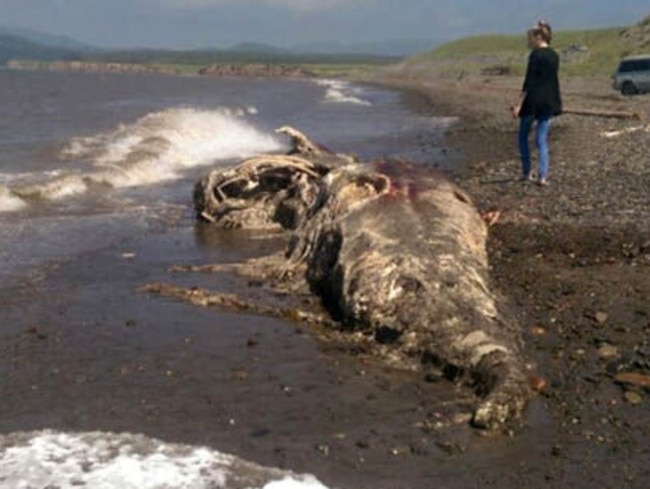
This creature was reportedly found on Russia’s Sakhalin Island in 2006 by a group of soldiers stationed nearby.
The island, located in the North Pacific Ocean on the east coast of Russia and just north of Japan and has long been a territorial bone of contention between the two countries, hence the military presence
According to reports at the time, officials removed the unidentified carcass from the beach after news of the find began to spread, but not before a handful of sightseers managed to take photographs, including the one above.
It was never seen again.
TRUNKO
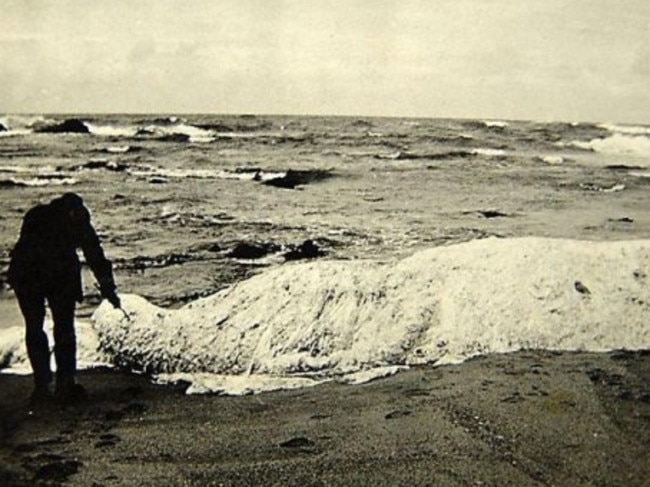
Trunko is the nickname given to the enormous white mass that washed ashore in Margate, South Africa in 1924.
The story appeared in the local paper at the time under the intriguing headline “Fish Like A Polar Bear”.
According to the report, witnesses earlier reported seeing the blob engaged in a three-hour battle with two killer whales.
Trunko rotted on the beach for 10 days before it was washed away by the tide. Incredibly, it was never examined by scientists in that time. It was thought all evidence of the blob had been lost until 2010, when this photograph, the only one known to exist, emerged.
THE MONSTER OF FOLLY BEACH
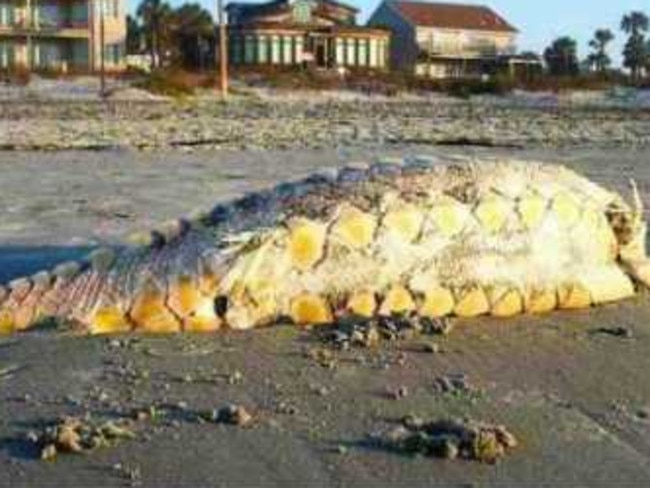
This one might be cheating a bit because it ended up being identified beyond reasonable doubt. However, it looks so much like so much like snapped off the tail of a stegosaurus that we think it deserves a place on this list.
Needless to say, locals got the shock of their lives when this scaly behemoth washed up on South Carolina’s Folly Beach in March 2012 and speculation about its origin raged for days.
The South Carolina Aquarium eventually identified it as an Atlantic sturgeon fish, which technically is prehistoric, having swum the earth’s oceans for more than 100 million years.
Sturgeons can grow up to five metres long and specimens weighing in excess of 360kg have been caught.
.
THE FOUR MILE GLOBSTER

The Four Mile Globster was not named for its size but the Tasmanian beach it was found on in 1997.
It was 4.6 metres in length and weighed in at about four tons — that’s 3,600kg — and sported paddle-shaped flippers, strands of white hair, and six fleshy lobes along each side.
The Four Mile Globster is not to be confused with the unidentified carcass found in Tasmania in 1960 that saw the term “globster” used for the first time by zoologist Ivan T Sanderson.
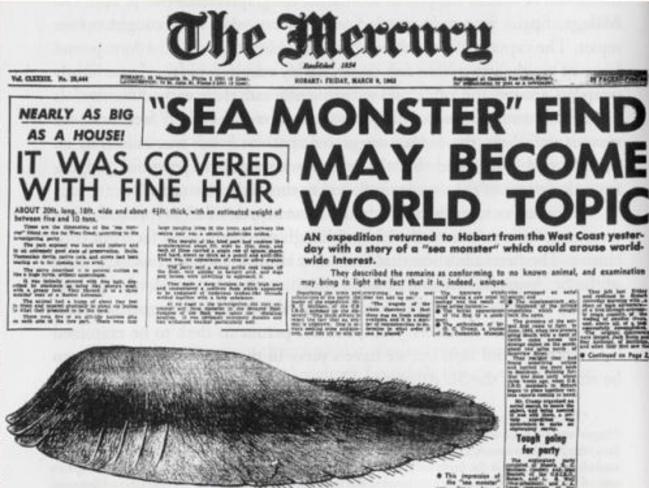
THE CANVEY ISLAND MONSTER
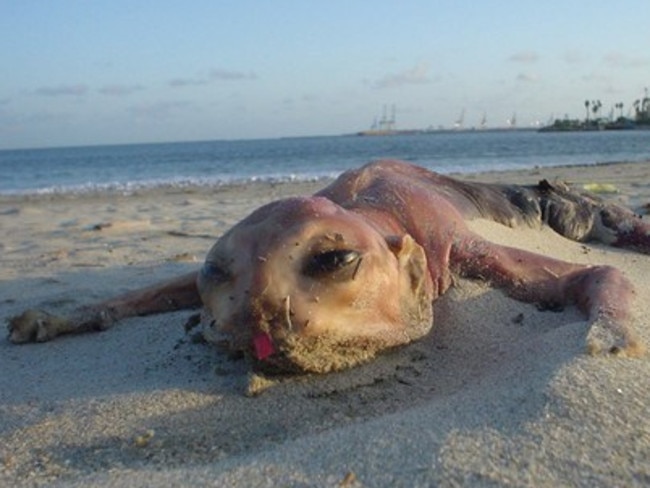
The Canvey Island Monster is the name given to an unusual creature whose carcass washed up on the shores of Canvey Island, Britain in November 1953. A second, more intact, carcass was discovered in August, 1954.
The 1953 specimen was described as being 76cm long with thick reddish brown skin, bulging eyes and gills. It was also described as having hind legs with five-toed, horseshoe shaped feet with concave arches — suggesting it walked on two legs — but no forelimbs.
Its remains were cremated after a cursory inspection by zoologists who said that it posed no danger to the public. The 1954 specimen was much larger (120cm) and weighed just over 11.3kg. It was fresh enough for samples to be taken from its eyes, nostrils and teeth, though no official explanation was given at the time as to what it was or what happened to the carcass.
Some have speculated that the creatures may have been a type of anglerfish, whose fins had been mistaken for feet. Others say they are more likely to have been frogfish, which do in fact walk on leg-like fins, have bulging eyes, and take on a variety of colours including reddish brown.
THE ROCH NESS MONSTER
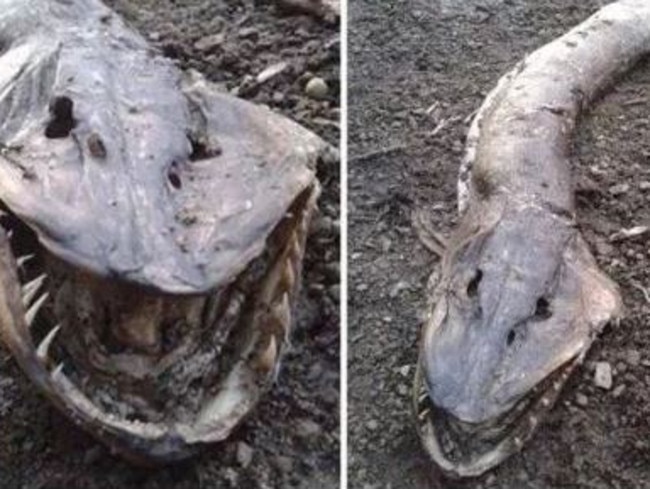
This so-called monster’s carcass was found washed up on the banks of Hollingworth Lake in Rochdale, Greater Manchester in August last year.
Its nickname is a play on Scotland’s fabled Loch Ness monster, which is said to inhabit Loch Ness, some 650km away.
According to The Mirror, witnesses spotted the creature at the edge of the water. It had an wide mouth full of razor sharp teeth and measured nearly a metre and a half long.
The Roch Ness Monster remains unidentified although there has been speculation it is some form of pike.
THE NEW ZEALAND GLOBSTER
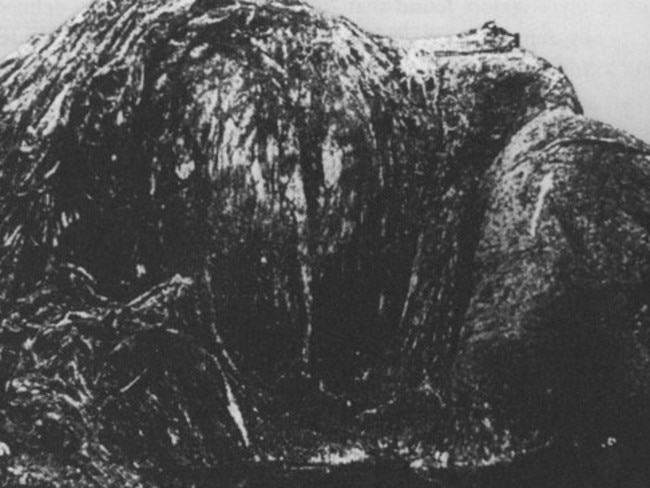
The New Zealand Globster was a large, unidentified carcass that washed ashore at Muriwai, in the west coast of the North Island, near Auckland, in 1968.
Measuring 30 ft (just over nine metres) long and eight ft (2.4m) high, the mass was covered with “sand-matted grey hair four to six inches long” growing out of a tough hide.[1] J. E.
The chairman of the University of Auckland’s Zoology Department, J.E Morton, was reportedly baffled by the object.
“You can rule out whales because of the hair, and you can rule out sea elephants and sea cows because of its size,” he said at the time. “I can’t think of anything it resembles.”
However, Mr Morton later concluded it was the partial carcass of a decomposed whale.
THE MONTAUK MONSTER
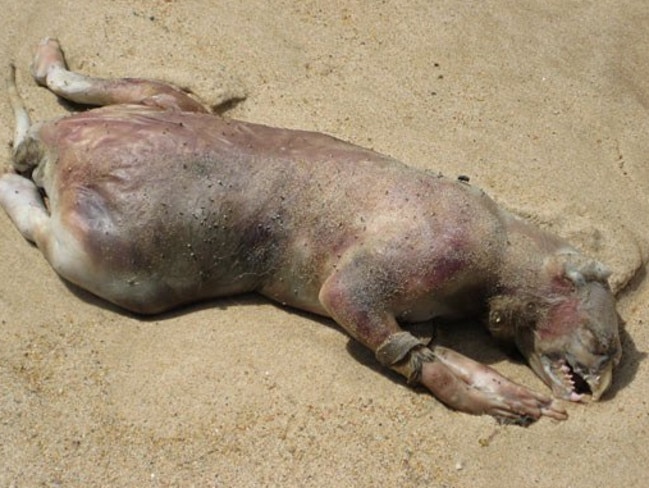
This creature was named after Montauk, New York, where it washed ashore in 2008.
Many have speculated it might be the mutant product of experimentation at the controversial Plum Island Animal Disease Center.
Other suggestions have included raccoon, turtle or water rat but the truth may never be known because, as in so many of these cases, the carcass vanished before samples were taken.
According to the local rag, Montauk resident Jenna Hewitt, 26, and three of her friends found the beast at Ditch Plains beach, a popular surfing spot, on July 12, 2008.
“We were looking for a place to sit when we saw some people looking at something … We didn’t know what it was … We joked that maybe it was something from Plum Island,” Ms Hewitt told the Montauk Independent.
The newspaper ran her colour photograph (above) under the headline “The Hound of Bonacville” (a dual reference to “Bonackers” the nickname given to East Hampton natives and Arthur Conan Doyle’s classic The Hound of the Baskervilles.
East Hampton Natural Resources Director Larry Penny later said it was his belief the Montauk Monster was a raccoon with its upper jaw missing.
THE HEBRIDES BLOB
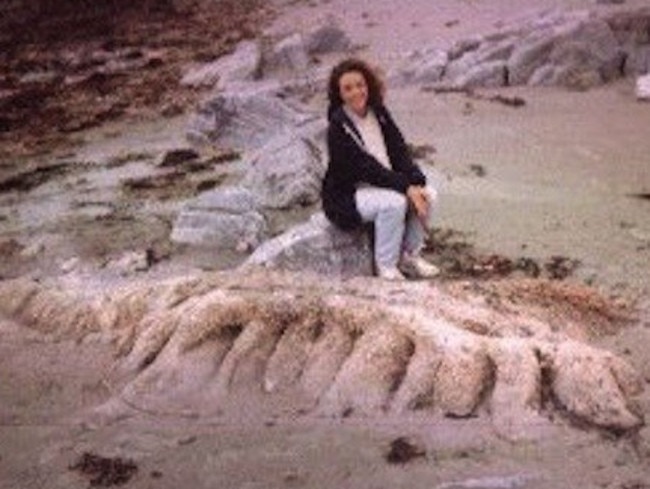
A British nanny called Louise Whitts stumbled across this hideous, foul-smelling mass while holidaying at Benbecula Beach in the Scottish Hebrides.
The creature was almost four metres long with a hairy body and, unlike other globsters, had finlike shapes on its back and a protuberance resembling a head.
Ms Whitts described it thus: “It had what appeared to be a head at one end, a curved back and seemed to be covered with eaten-away flesh or even a furry skin and had all these shapes like fins across its back.”
Cryptozoologists say Ms Whitt’s description fits that of a ragworm, which typically grows no bigger than five centimetres. They concluded the Hebrides blob was either an ancient, primordial ragworm or a marine carcass in advanced stages of decay.
THE BEAST OF TENBY
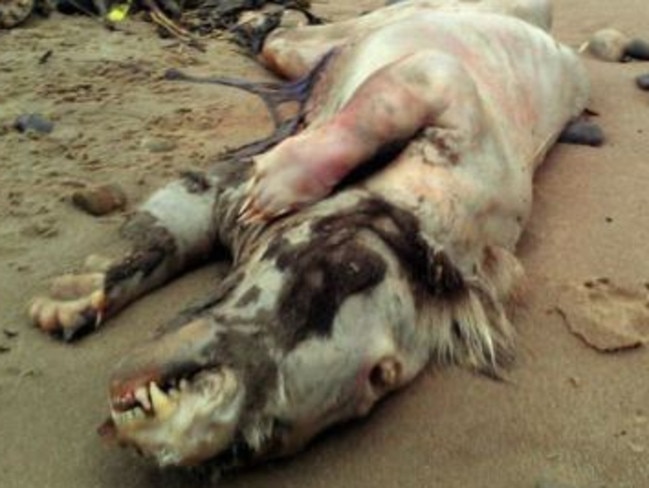
The Beast of Tenby had the unfortunate appearance of several mangy animals fused together, although, to be fair, it was obviously decomposing.
The bloated creature was found at Tenby in Wales in 2013 by Peter Bailey, 27, and reminded a lot of people of the Montauk Monster (see above).
“I was taking my dog for her evening walk across the south beach when she started acting out of character by howling and running round in circles,” Mr Bailey told the Western Telegraph.
“I ran up to her to see if she was OK and then I came across this hideous-looking carcass. I could see it had little hair left on it’s decomposing body. Immediately I thought it was a horse but it had claws like a bear and a body of a pig. Surprisingly it didn’t smell.”
Mr Bailey’s photograph was posted on Facebook, where it was shared thousands of times and widely debated.
The Sun reached out to Swansea University’s College of Science professor Dr. Dan Forman, who said while it was “difficult to say,” the creature’s five toes were reminiscent of a badger. Meanwhile, the Western Telegraph reached out to several animal experts, who suggested it could be either a badger or a dog.
THE ST AUGUSTINE MONSTER
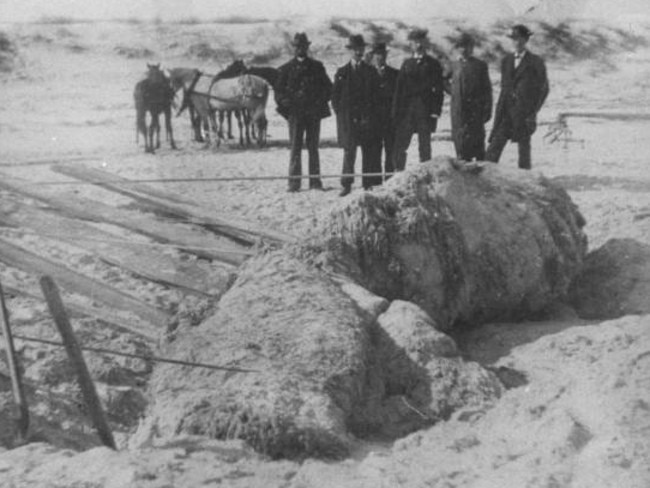
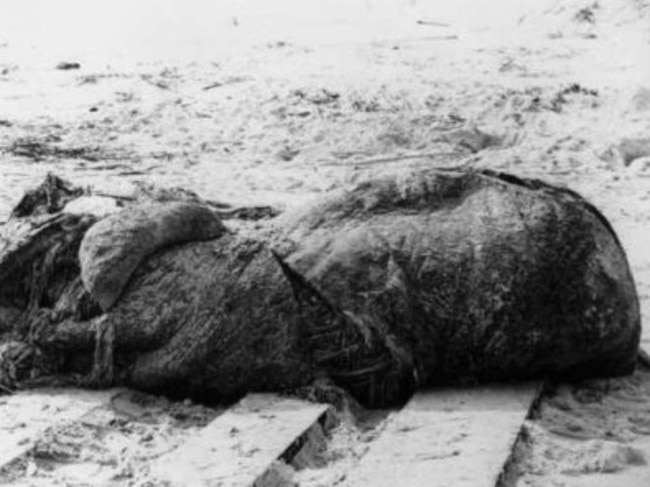
This thing washed up on St Augustine Beach in Florida in 1896 and was imaginatively named “The St Augustine Monster”. It measured 5.4 metres long and weighed almost five tons — that’s a whopping 4,535kg.
Scientists at the time could not agree on its identity but in 1995, a century later, tests carried out on samples preserved from the site indicated the “monster” was likely to have been a sperm whale carcass.
THE BERMUDA BLOB
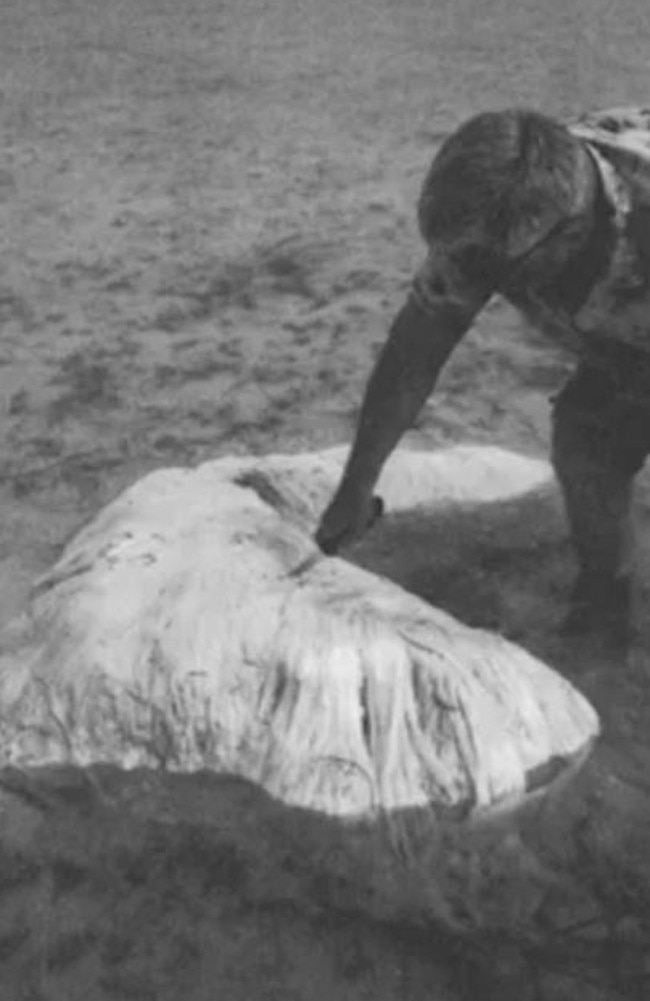
This case actually refers to two different globsters that washed ashore in Bermuda on different occasions. Known as Bermuda Blob One (found in 1988) and Bermuda Blob Two (found in 1997) the horrid masses are suspected to be the remains of sperm whales but that theory has never been confirmed.

